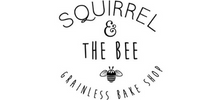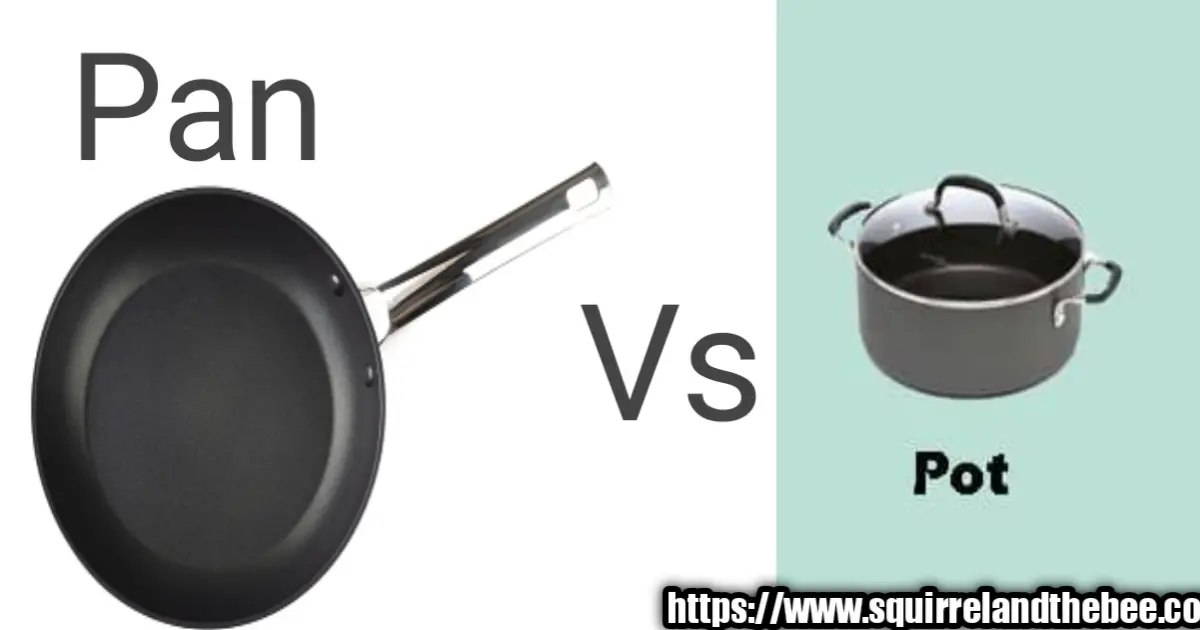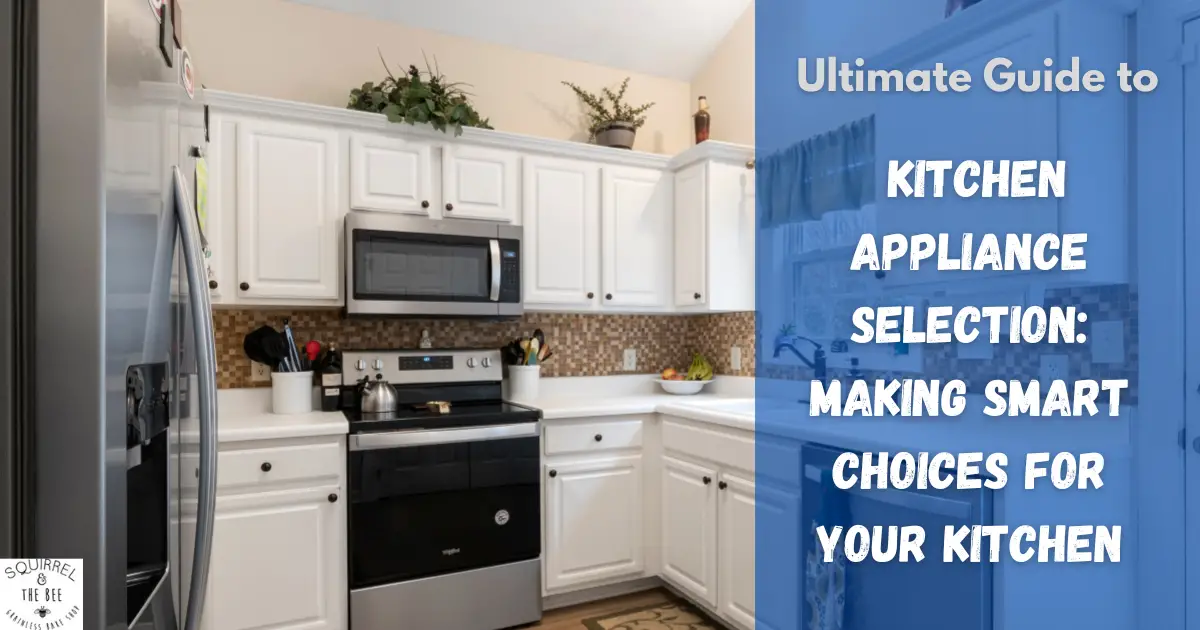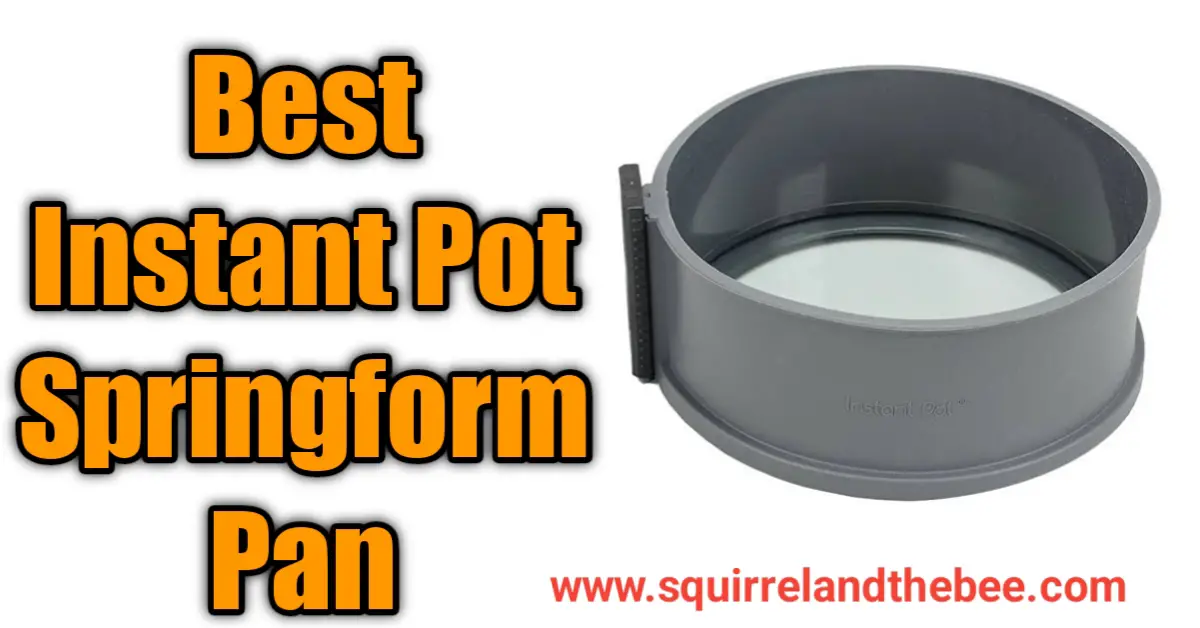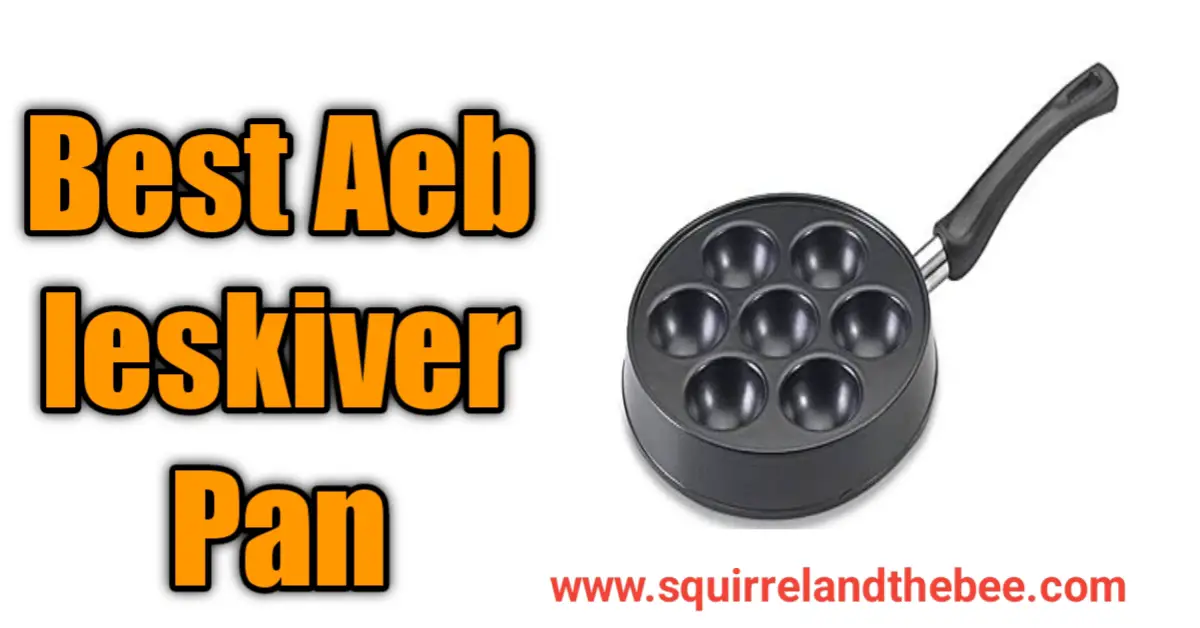Isn’t it astounding how mankind invented the art of cooking? What’s The Difference Between A Pot And A Pan? You apply heat to some distinctly different raw ingredients, and it all comes together as one delicious dish.
Well, if the basic idea of cooking is to apply heat, then why do we use separate types of utensils for preparing different dishes? How are pots and pans any different?
What Is A Pot?
A pot is a type of cookware consisting of tall walls. Pots are usually used for boiling or simmering. In simple words, they are intended for cooking that requires water or other liquids to completely immerse the ingredients to ensure thorough cooking.
Pots are intentionally designed with loop handles on opposite ends, as these hefty kitchenware can get quite heavy when filled with water. This ingenious design is rather a safety feature for cooks. No one would like a splash of boiling water on their sensitive skin, would they?
Types Of Pots
Stock Pot
Usually made of stainless steel and coming in a variety of sizes, stock pots are among the most common types of pots out there. They are deep and flat-bottomed, and feature a removable lid.
Stock pots heat up rapidly, allowing for a good, even simmer. This kitchen instrument is mainly used for boiling, steaming and making stock.
Pressure Cooker
Everyone likes a tender cut of beef, but an experienced cook will tell you that it’s easier said than done. Cooking beef can be hard, frustrating and time-consuming. Even though they need some time to master, pressure cookers can be very useful for cooking tough meat.
Pressure cookers are especially good at cooking food faster. Its tightly sealed lid is what works the magic. As liquid starts to boil inside the pot, steam gets trapped under the sealed lid, building up pressure. This results in high cooking temperatures, and therefore shorter cooking time.
Dutch Oven
You could think of a Dutch oven as a redesigned stock pot. It consists of thick walls (generally made of cast iron), and comes with a tight-fitting lid. This utensil is pretty heavy on its own, and lifting a Dutch oven with its contents inside will not be an easy task (unless if you’re a bodybuilder, of course!)
Cast iron is a poor conductor of heat, which means Dutch ovens take longer to heat up compared to pots made of stainless steel. Looking on the brighter side, though, Dutch ovens are great at retaining heat, making them perfect for braising meat. These sealed, heavy pots are also a good choice for making soup or stew.
These thick-walled beasts can withstand extremely high temperatures. This means, you can also deep fry those expensive calamari rings on this pot
What Are Pots Used For?
Pots are commonly used for making soup and stew, and for boiling or simmering.
Whether you are trying to make a curry for your family or just making a hot bowl of soup to warm yourself up during winter, the pot in your kitchen will be your accomplice
What Is A Pan?
While pots, having tall sides, are deep, pans are shallow and flat-bottomed. Also, unlike pots, pans are designed with a single long handle. These long, one-sided handles allow chefs to toss and flip food without the need of a spatula.
This family of utensils is mostly used for frying or searing, and for other cooking methods that require browning or crisping.
Types of Pans
Skillet
There’s a controversy in the culinary world about the difference between a skillet and a fry-pan. While most people use the two terms interchangeably, some chefs believe skillets and frying pans are two different things.
We are not going to try to settle this long-running dispute. However, we believe that skillets and frying pans are vastly similar.
Skillets are shallow pans with flat bottoms. Depending on the model of the skillet itself, its sides may be slanted or rounded, and are usually made of stainless steel or ceramic.
Over the past few decades, though, non-stick frying pans (or skillets) made of aluminum alloy have become a fan-favorite due to their superior convenience.
As the name suggests, frying pans are a popular choice for frying and searing. Some pizza recipes these days also suggest using a skillet to make pizza. We are not too sure if our Italian readers are going to be fond of that idea, though!
Cake Pan
Whether you want to make a deep-fried corndog or a sweet vanilla birthday cake for your best friend, there’s a pan for everything!
Cake pans come in circles, rectangles and squares, but there’s no fun shape that’s too ridiculous for a cake pan. Ranging from cake pans in the shapes of cars, planes and castles, there’s no end to creativity for bakers to bake a cake for every occasion.
Just like the variety of cakes that exist, cake pans are made of a variety of materials, almost as if there’s a different cake pan for every type of cake you bake. Among the many materials, cake pans are made out of ceramic, silicone, glass, and non-stick metals, which are the most popular.
Electric Skillet
Cooking on a stove on a hot summer day can be exhausting. It’s the “home-equivalent” of global warming. The fierce heat of the fire can easily crank up the temperature of your abode by a few degrees.
Electric skillets are a good alternative if you want to avoid heating up your entire house. It uses electricity to keep food warm and to fry food.
Stoves sometimes heat up pots and pans unevenly, as the area of contact with the fire is usually warmer than the rest. Electric pans thrive on evenly cooking or heating food.
They are also portable. This makes electric skillets perfect for travelers who like to have a taste of home while wandering abroad.
What’s The Difference Between A Pot And A Pan?
Wok
Introduced to the west and popularized by the Chinese, wok is an essential tool in Asian households. This unusual-looking utensil is a hybrid between a pot and a pan, built with deep rounded bottoms and featuring a long handle with a loop handle on one side.
Woks are best for stir frying, but are also used for pan frying, deep frying and roasting nuts. This handy, versatile tool is sacred to Asian cuisine.
We would suggest you refrain from cooking fried rice on skillets under the watchful eye of Chinese moms. According to the native Chinese, fried rice must be made using a wok because it is the “Wok Hay” (the breath of wok) that defines a good bowl of fried rice.
What Are Pans Used For?
Pans are useful if you want to fry, sear or brown and crisp your food. However, there are many variations to pans. A specific type of pan can also be used to bake.
What’s The Difference Between A Pot And A Pan?
| Pot | Pan |
| Used for boiling, simmering, making soup, stew, curry. | Used for frying, searing, baking. |
| Made of Copper, Cast Iron(specifically for Dutch/French oven), Stainless Steel orAluminum. | Made ofCopper, Cast Iron, Silicone, Ceramic, Glass, Aluminum alloy or Stainless Steel |
| Built with two loop handles on opposite sides | Built with one long handle or one long handle with a loop handle on the opposite side |
FAQs
When Does A Pan Become A Pot?
What’s The Difference Between A Pot And A Pan?
Other than a few important characteristic differences, both pans and pots are identical. A pan made of a high sidewall (more than about 4 inches high) can be considered a pot. Well, you wouldn’t be wrong if you said it the other way round: a pot with a low side wall is a pan.
Another feature that makes a pan a pan is the angled sidewall. This is very common in woks, frying pans and skillets, as slanted walls allow for easier tossing and flipping.
Can You Use A Pot As A Pan?
The answer is yes, but only if you absolutely need to.
A pan functions by concentrating the heat on the bottom, cooking (or frying) the underside of the food at a high temperature. This is how you get browning on your food. Pots, on the other hand, will spread the heat around the sidewalls, hence taking longer to brown or crisp your food.
Pans are also designed to let vapor escape, unlike pots which let steam condense and return to the food. So, for example, if water droplets fell back from the lid or the sidewalls into your fries, you would end up with disgusting, soggy fries.
Another small disadvantage of using a pot as a pan is that the high, perpendicular walls of a pot will make flipping your fries a heck more challenging than it actually is. You better be flipping those fries beforehand if you don’t want them burnt!
Conclusion
We have read a complete post about What’s The Difference Between A Pot And A Pan?
A good cook knows his pots and pans by heart. Either of these utensils is good for some specific cooking methods, and not-so-good for others. Before selecting the utensil to cook your next meal in, conduct a few Google searches.
